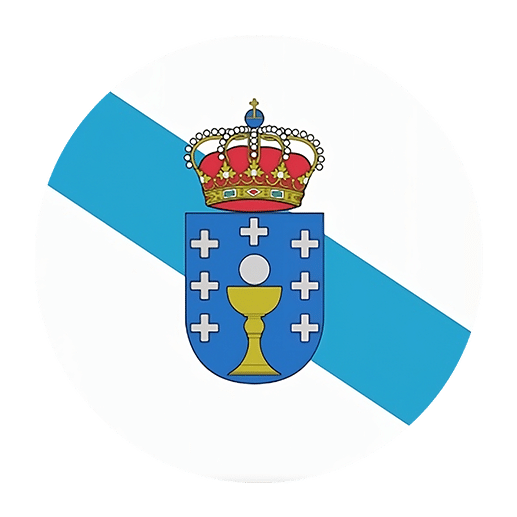Galician, a Romance language spoken primarily in the autonomous community of Galicia in northwestern Spain, shares many characteristics with its linguistic relatives, Spanish and Portuguese. However, it also possesses unique features that distinguish it from these other Ibero-Romance languages. For English speakers learning Galician, understanding the nuances of verb tenses, particularly the continuous and progressive tenses, can be crucial for achieving fluency and effective communication.
The continuous and progressive tenses in Galician are used to express ongoing actions, similar to their counterparts in English. However, there are differences in their formation and usage that learners must understand. This article will delve into the formation, usage, and nuances of these tenses in Galician, providing comprehensive explanations and practical examples to aid your learning process.
Understanding the Continuous and Progressive Tenses
Before diving into the specifics of Galician, it’s essential to understand what continuous and progressive tenses are. In English, continuous tenses (also known as progressive tenses) are used to describe actions that are in progress at a specific point in time. For example:
– Present Continuous: “I am eating.”
– Past Continuous: “I was eating.”
– Future Continuous: “I will be eating.”
In Galician, the continuous and progressive tenses serve a similar purpose but are constructed differently. The primary tenses we’ll focus on are the present continuous, past continuous, and future continuous.
Present Continuous Tense
Formation: The present continuous tense in Galician is formed using the present tense of the verb “estar” (to be) followed by the gerund form of the main verb. The gerund is typically formed by removing the infinitive ending (-ar, -er, -ir) and adding -ando for -ar verbs, or -endo for -er and -ir verbs.
For example:
– “estar” (to be) + “comendo” (eating) = “estou comendo” (I am eating)
Here’s the conjugation of “estar” in the present tense:
– Eu estou (I am)
– Ti estás (You are – singular, informal)
– El/Ela/Vostede está (He/She/You are – singular, formal)
– Nós estamos (We are)
– Vós estades (You are – plural, informal)
– Eles/Elas/Vostedes están (They/You are – plural, formal)
Examples:
– Eu estou lendo un libro. (I am reading a book.)
– Ti estás traballando moito. (You are working a lot.)
– El está estudando para o exame. (He is studying for the exam.)
– Nós estamos comendo pizza. (We are eating pizza.)
– Vós estades xogando ao fútbol. (You are playing football.)
– Eles están viaxando por Europa. (They are traveling through Europe.)
Past Continuous Tense
Formation: The past continuous tense in Galician is formed using the imperfect tense of the verb “estar” followed by the gerund form of the main verb.
For example:
– “estar” (to be) + “comendo” (eating) = “estaba comendo” (I was eating)
Here’s the conjugation of “estar” in the imperfect tense:
– Eu estaba (I was)
– Ti estabas (You were – singular, informal)
– El/Ela/Vostede estaba (He/She/You were – singular, formal)
– Nós estabamos (We were)
– Vós estabades (You were – plural, informal)
– Eles/Elas/Vostedes estaban (They/You were – plural, formal)
Examples:
– Eu estaba lendo un libro cando chamaches. (I was reading a book when you called.)
– Ti estabas traballando cando chegou. (You were working when he arrived.)
– Ela estaba estudando toda a noite. (She was studying all night.)
– Nós estabamos comendo cando comezou a chover. (We were eating when it started to rain.)
– Vós estabades xogando ao fútbol onte. (You were playing football yesterday.)
– Eles estaban viaxando o ano pasado. (They were traveling last year.)
Future Continuous Tense
Formation: The future continuous tense in Galician is formed using the future tense of the verb “estar” followed by the gerund form of the main verb.
For example:
– “estar” (to be) + “comendo” (eating) = “estarei comendo” (I will be eating)
Here’s the conjugation of “estar” in the future tense:
– Eu estarei (I will be)
– Ti estarás (You will be – singular, informal)
– El/Ela/Vostede estará (He/She/You will be – singular, formal)
– Nós estaremos (We will be)
– Vós estaredes (You will be – plural, informal)
– Eles/Elas/Vostedes estarán (They/You will be – plural, formal)
Examples:
– Eu estarei lendo un libro mañá. (I will be reading a book tomorrow.)
– Ti estarás traballando a esa hora. (You will be working at that time.)
– El estará estudando na biblioteca. (He will be studying in the library.)
– Nós estaremos comendo cando cheguen. (We will be eating when they arrive.)
– Vós estaredes xogando ao fútbol despois da escola. (You will be playing football after school.)
– Eles estarán viaxando a próxima semana. (They will be traveling next week.)
Using Continuous and Progressive Tenses in Context
Understanding the formation of these tenses is essential, but it’s equally important to know when and how to use them in context. Here are some practical tips and examples to help you master the continuous and progressive tenses in Galician.
Describing Ongoing Actions
Continuous and progressive tenses are primarily used to describe actions that are currently happening or were happening at a specific point in the past or future.
Examples:
– Present Continuous: Estou a escribir un artigo agora mesmo. (I am writing an article right now.)
– Past Continuous: Estabamos a ver unha película cando o teléfono soou. (We were watching a movie when the phone rang.)
– Future Continuous: Estarei a traballar cando cheguen os meus amigos. (I will be working when my friends arrive.)
Emphasizing Duration
These tenses can also emphasize the duration of an activity, especially when it continues over a period of time.
Examples:
– Present Continuous: Ela está a correr todos os días para prepararse para a maratón. (She is running every day to prepare for the marathon.)
– Past Continuous: Estaban a aprender galego durante moitos anos. (They were learning Galician for many years.)
– Future Continuous: Estaremos a viaxar por Europa durante o verán. (We will be traveling through Europe during the summer.)
Setting the Scene
In narrative contexts, the past continuous tense is often used to set the scene or provide background information.
Examples:
– O sol brillaba e os paxaros cantaban mentres estabamos a pasear polo parque. (The sun was shining and the birds were singing while we were walking in the park.)
– Ela estaba a cociñar cando chegou a visita. (She was cooking when the guests arrived.)
Expressing Planned Actions
The future continuous tense can be used to talk about planned or anticipated actions in the future.
Examples:
– Estarei a traballar na miña tese durante as vacacións. (I will be working on my thesis during the holidays.)
– Eles estarán a preparar a festa toda a semana. (They will be preparing the party all week.)
Common Mistakes and How to Avoid Them
Learning a new language involves making mistakes, but being aware of common errors can help you avoid them. Here are some pitfalls to watch out for when using continuous and progressive tenses in Galician.
Mixing Tenses
One common mistake is mixing different tenses within the same sentence or context. Ensure you maintain consistency in your verb tenses.
Incorrect: Estaba a traballar cando chegas. (I was working when you arrive.)
Correct: Estaba a traballar cando chegaches. (I was working when you arrived.)
Incorrect Gerund Formation
Another frequent error is forming the gerund incorrectly. Remember the correct endings: -ando for -ar verbs, and -endo for -er and -ir verbs.
Incorrect: Estaba a leindo un libro. (I was reading a book.)
Correct: Estaba a lendo un libro. (I was reading a book.)
Overusing Continuous Tenses
While continuous tenses are useful, overusing them can make your speech or writing sound unnatural. Use them appropriately to describe ongoing actions or emphasize duration, but don’t rely on them for every action.
Incorrect: Estaremos a comer a cea todas as noites ás oito. (We will be eating dinner every night at eight.)
Correct: Ceamos todas as noites ás oito. (We eat dinner every night at eight.)
Practice Makes Perfect
The key to mastering continuous and progressive tenses in Galician is practice. Here are some exercises and activities to help you reinforce your learning:
Translation Exercises
Translate the following sentences from English to Galician, paying attention to the correct use of continuous and progressive tenses:
1. I am watching television.
2. They were studying all night.
3. She will be traveling next month.
4. We are learning Galician.
5. He was working when I called.
Writing Prompts
Write a short paragraph in Galician using each of the continuous and progressive tenses. For example, describe what you are doing right now, what you were doing yesterday, and what you will be doing tomorrow.
Conversation Practice
Engage in conversation with a language partner or tutor, focusing on using continuous and progressive tenses. Practice asking and answering questions about ongoing activities, past events, and future plans.
Conclusion
Mastering the continuous and progressive tenses in Galician is an essential step for English speakers aiming to achieve fluency in this beautiful language. By understanding their formation, usage, and nuances, and by practicing regularly, you can effectively communicate ongoing actions and emphasize duration in your conversations and writing. Remember to stay consistent in your tenses, form gerunds correctly, and use these tenses appropriately to enhance your language skills. Boa sorte! (Good luck!)

